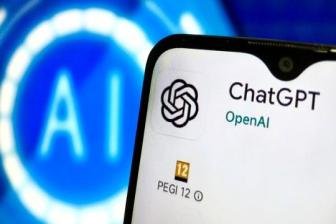2024-02-18 Global Times Editor: Li Yang
San Francisco-based OpenAI fell sharply as China enjoyed the last days of its Lunar New Year holiday. The realistic videos of up to a minute long created by Sora, an AI generator that converts text to video, are so remarkable that people imagine the endless possibilities of this generator. Sora could probably reshape the entire film industry and also reflects the disparity between China and the US in generative AI.
According to OpenAI explainers, Sora can generate complex scenes with precise details such as multiple characters, specific types of movement, themes, and backgrounds. Understand not only what the user asks for in a prompt, but also how those things exist in the physical world.
Industry observers note that the arrival of the video generation model was highly anticipated. However, some people are surprised by the speed of its development, with some excitedly calling it “the arrival of a new industrial revolution.'' On the other hand, there are concerns that this progress could lead to the “disappearance of reality” as we know it, and could spark a fight against Hollywood's dominance of the film industry.
“When I watch Sora, the first word that comes to my mind, like the majority in the film industry, is ‘shock.’ As film producers, we are excited about the potential impact of AI on various aspects of filmmaking. “I understand that works related to movie previews will be affected,” Ma Heliang, secretary general of the Science Fiction Film Working Committee of the China Film Association, told the Global Times on Saturday.
However, current technology is still far from the level needed to produce theatrical films or to hollow out the film industry as a whole. Over the past 100 years, cinema has established an emotional connection with audiences and a shared social space. It involves socialization and shared aesthetics, making it a complex entity. This experience, he said, cannot be replaced by a simple video clip generated by AI.
“However, Sora’s powerful capabilities signal an increasingly clear reliance on AI to support human creativity, allowing creators to become less constrained by industrial processes. “You will be able to express what you want more freely using AI tools,” he said.
Zhou Honyi, founder and chairman of 360 Security Technology, said Sora could disrupt the advertising, movie trailer, and short video industries, but it may not necessarily defeat TikTok right away. He said no. It is likely to become a creative tool for TikTok.
OpenAI explained that it teaches AI how to understand and simulate the physical world in motion, with the goal of training models that help people solve problems that require real-world interaction. . Industry observers said what's remarkable about Sora is that it proves that AI can build “general-purpose simulators of the physical world.” In this regard, its potential impact is expected to be unprecedented, not only for the film and television production sector, but also for the content production industry as a whole.
“When AI is connected to a camera and can watch every movie, YouTube, and TikTok video, its understanding of the world will go far beyond text learning…This is far from achieving artificial general intelligence (AGI). “It's not a matter of 10 or 20. It may take a few years, but probably within a year or two,” Chou exclaimed.
Many people on Chinese social media posted that Sora's appearance highlighted the widening gap between China and the United States. Zhou said that the development level of large models in China seems to be close to GPT-3.5, but compared to 4.0, there is still a difference of one and a half years. Whether it's GPT-5 or machine self-learning to generate content, OpenAI is sure to have some secret weapons yet.
Liu Wei, director of the Human-Machine Interaction and Cognitive Engineering Laboratory at Beijing University of Posts and Telecommunications, is also a frequent participant in talks with the U.S. side on AI technology, and scholars from both countries have been quoted in the Global Times. told. There is a consensus that the United States is at the forefront of software and hardware development, and that this advantage will continue to grow. But when it comes to AI applications and data collection, U.S. academics agree that China has the lead.
“In the field of human-machine collaboration, China and the United States are on equal footing. This is one of the reasons why the United States has repeatedly held AI technology dialogues with China. For the first time, we are on equal footing and there is a willingness to dialogue,” Liu said. “But at the same time, the United States is very concerned that China will make great strides in human-machine cooperation and surpass the United States in this respect.”
At this time, Sora is not accessible to the general public. OpenAI said its AI generators can only be accessed by cybersecurity experts known as “red teams” who assess areas of potential harm or risk.
Liu pointed out that this technology is a double-edged sword. Rapid development is sure to bear the brunt of traditional ethnic groups, laws, and production methods. Laissez-faire leads to a violation of people's interests, while overly strict regulations slow down technological development.
“We need to give room for trial and error and ensure a balance between innovation, application and regulation, and strike a balance,” Liu stressed.

